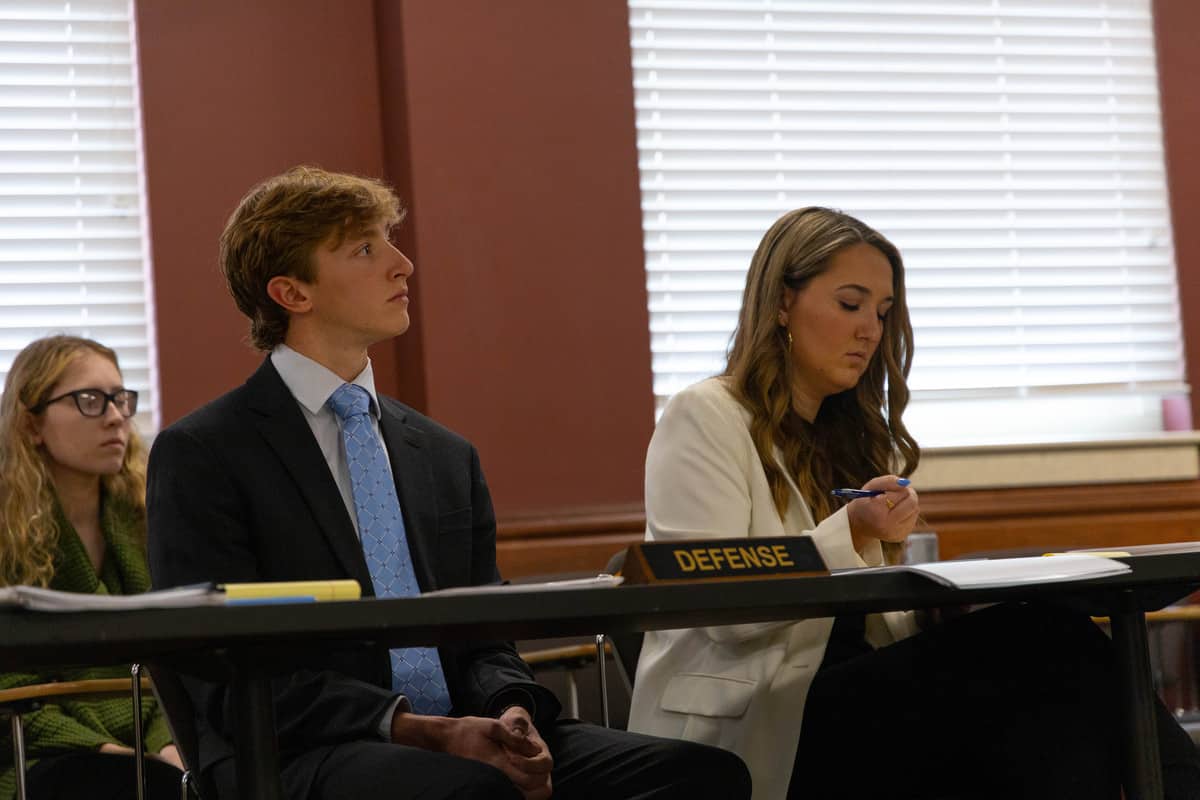Looking at her now, you would not know Emily Sanders almost died two years ago struggling with an eating disorder and alcoholism. She was told by her nutritionist she shouldn’t be alive today.
Sanders had received a new meal plan from her nutritionist, and fearful of meeting the requirements of the plan, she started drinking instead of eating. Stumbling up the stairs to her room, she blacked out and fell, busting her head open. She woke up in a hospital a few hours later, lucky to be alive.
“I had to hit rock bottom, literally, before I decided I was going to do something,” Sanders said.
Casey Ellis spent the first part of her freshman year sleeping half of the day and missing class because she was so weak.
“My body was slowly shutting down,” Ellis said.
Ellis went home right before Christmas break to receive treatment for an eating disorder and did not return to school until the next fall.
Both Sanders, a graduate student in finance, and Ellis, a junior majoring in international studies, struggled with anorexia nervosa since they were young, and they are not alone.
In the United States, 20 million women and 10 million men suffer from a clinically significant eating disorder at some time in their life, according to the National Eating Disorders Association. Only one in 10 of those men and women suffering from an eating disorder actually receive treatment, according to the National Association of Anorexia Nervosa and Associated Disorders (ANAD).
According to ANAD, an eating disorder is an unhealthy relationship with food and weight that interferes with many areas of a person’s life. One’s thoughts become preoccupied with food, weight or exercise. Often a person with an eating disorder can be critical about his or her body image, and his or her eating habits may disrupt normal body functions.
Eating disorders are not necessarily just about weight. People can use food as a coping mechanism for uncomfortable or painful emotions and to help give a sense of control when feeling or situations begin to feel overwhelming, according to ANAD. Eating disorders can be caused by multiple factors including genetics, metabolism, psychological issues and social issues. These disorders can include anorexia nervosa, bulimia nervosa, binge eating or an eating disorder not otherwise specified.
For Sanders and Ellis, often hearing their peers talk about weight and appearances made it easy to return to anorexia, and the ability to separate themselves from other people on campus made it that much harder to get help.
“It was easy to isolate myself in my dorm room,” Sanders said. “My parents weren’t there to watch over me either.”
Dieting and exercise is a common concern on campus, especially among women. Ninety-one percent of women surveyed on a college campus had attempted to control their weight through dieting. Twenty-two percent dieted “often” or “always,” according to ANAD.
Lee Keyes, executive director for the Counseling Center at The University of Alabama, said those who have eating or body image concerns outnumber those who are formally diagnosed with an eating disorder, which is consistent with what can be seen on campus, but even preoccupation with body size can be potentially dangerous.
“It’s a general rule that the formal diagnosis of eating disorders is relatively low,” Keyes said. “If we talk about eating disorder behavior though, that number is much greater. Students engaging in restriction fall below anorexia nervosa, but we still recommend that they come before they develop a serious disorder.”
Keyes said the best thing a student who is struggling with an eating disorder, or even symptoms of an eating disorder, can do is to talk to someone and seek help.
“When students perceive they may have issues in this area, just like many of their peers, they should not waste time, and access the range of services which are available here at UA, in both individual and group formats,” Keyes said.
Accountability from peers made a difference for Ellis in fighting her eating disorder. When returning to Alabama in the fall of her sophomore year, Ellis found the struggle against anorexia to be significantly difficult.
“It really wasn’t good at first, but I joined a life group at Calvary and that was huge,” she said. “Having that accountability and not having to do it alone made all the difference. I have people rooting for me and reminding me that I don’t need to result to restricting my eating to be happy.”
Sanders said having community of people to help hold her accountable and to talk to was important for her too. When she was in rehab and living in Birmingham, she was part of support groups, but had not found one in Tuscaloosa.
“When you are in recovery from an eating disorder it is important to be with other people,” she said.
Sanders and another graduate student, Amanda Taylor, started Eating Disorders Anonymous, an open 12-step meeting for those interested in recovery from an eating disorder. The meetings take place every Friday evening from 4:30 to 5:30 p.m. in the Collegiate Recovery Community building located on Paul Bryant Dr.
Sanders said the group is open to anyone, even people who are just interested in knowing more about eating disorders, or friends of people suffering from an eating disorder.
“It’s important to speak up and use your voice,” Ellis said. “Let someone know what is going on and use the resources offered on this campus through the Counseling Center and through EDA.”







